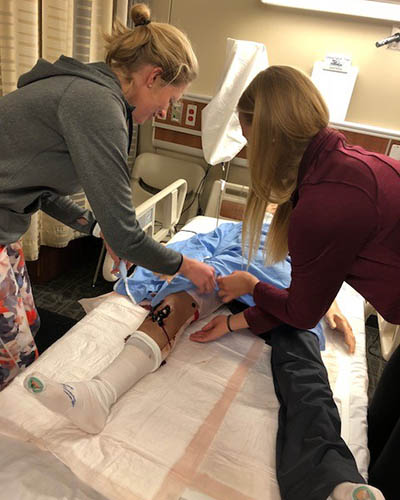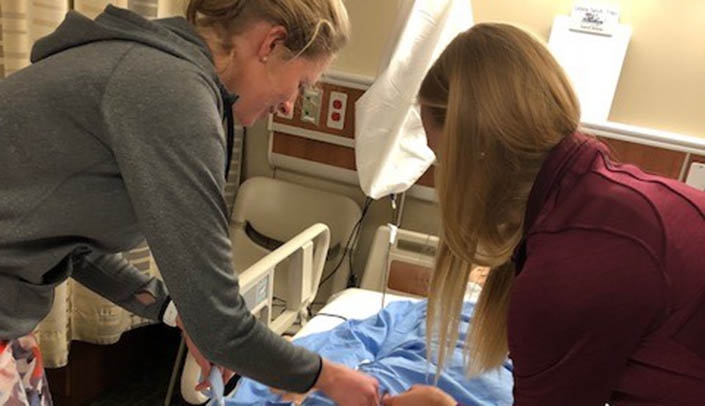 |
Prospective nursing students participate in an escape room exercise of a simulated motor vehicle accident patient. |
Faculty and staff at the UNMC College of Nursing Northern Division in Norfolk are using an engaging and fun tool in an effort to boost the number of Nebraska nurses — escape rooms.
Called “Escape to Nursing,” faculty and staff developed a new student recruitment strategy that gives high school and college students insight into the role and scope of professional nursing.
The impetus: the U.S. nursing workforce is facing a severe shortage of more than 500,000 registered nurses in the next five years and in Nebraska a need for nearly 1,200 by 2020.
“Nursing education is focused on the use of simulation and technology to provide safe environments to practice highly technical skills,” said Liane Connelly, Ph.D., assistant dean of the College of Nursing Northern Division. “The simulation laboratory is an excellent venue to offer an escape room event for prospective students. It incorporates simulation via gaming into the learning experience.”
High school and college students grouped in teams of four were presented with challenges requiring them to solve a puzzle or challenge to earn a reward. Rewards are usually in the form of a cue. Combinations of cues enable participants to unlock the door and escape.
Four rooms were designed with key nursing concepts and patient health conditions — pediatric asthma, depression, motor vehicle accident, and newborn infant cold stress. The rooms incorporated use of high-fidelity simulation mannequins and nursing tools such as stethoscopes, dressing supplies, and other props.
Faculty, staff, and simulation specialists presented clinical scenarios, activities, and cues leading participants to the key required to escape from the room.
Lisa Walters, an instructor at the college, said allowing students a chance to experience different facets of nursing is important.
“Many do not realize the variety of options available to nurses,” Walters said. “Seeing how the technology is used in education and the act of making decisions and intervening in patient care, is an experience potential students wouldn’t get with a traditional open house or meet and greet.”
Students performed nursing skills including applying pressure dressings to actively bleeding wounds, splinting extremity fractures, and administering fluids and breathing treatments in the simulation environment using high fidelity mannequins.
Faculty recently published their experience in the Journal of Nursing Education. Faculty included Dr. Connelly, Beth Burbach, Ph.D., Colleen Kennedy and Lisa Walters. The division held its first “Escape to Nursing” event last year.
